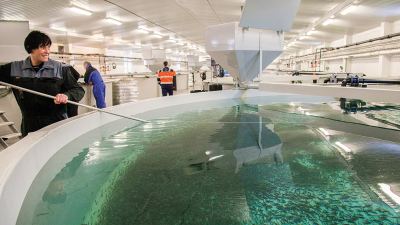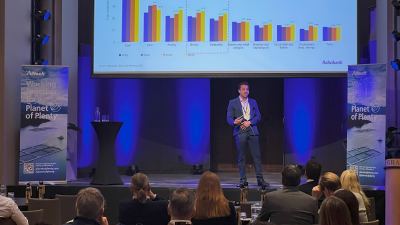The missing link in shrimp symbiosis

Researchers are working to improve shrimp health through the production of bokashi and incorporation of key enzymes.
By Walter Moncayo
In aquaculture, pathological challenges become a learning opportunity for production technicians, helping us to better understand our role and realize that we are mere mediators between science and nature. An aquaculture pond is a diverse habitat populated by countless species that interact with each other to achieve a unique balance, known as symbiosis.
A holistic approach to maintaining aquatic symbiosis
The existing variables in aquaculture are diverse and interrelated. Pathological events are an imbalance of the aquaculture universe; therefore, any techniques and methodologies that incorporate key elements (e.g., water quality, soil, nutrition, biosecurity) must be positive and sustainable over time. Treating these variables separately will not generate permanent results. The aim should be to seek alternative options, such as integrating them into a more holistic concept.
A great example is technology that combines prebiotic concepts with probiotics, which work together to create a symbiotic environment. Eventually, this alternative approach stimulates beneficial microorganisms (e.g., phytoplankton, zooplankton, bacteria, yeast), which stabilize aquaculture ponds and lower the risk of disease.
Becoming part of the symbiosis
Through management programs focused on health, biosecurity, nutrition and immune support, we have integrated ourselves into this symbiosis, effectively becoming the missing link in aquaculture.
For example, in Ecuador, we have been working with industry partners to develop a symbiotic environment for shrimp through the production of bokashi. Bokashi consists of soy cake, a source of soluble and insoluble fibers. Its protein is also considered a functional food source. Soy nutrients are released when combined with enzymes such as Allzyme® SSF and Allzyme® Vegpro, in addition to Lacto-Sacc®, which provides high-performance probiotics.
An interesting fact is that the probiotics in Lacto-Sacc, such as Latobacillus acidophilus and Enterococcus faecium, contribute metabolites (natural organic acids), which acidify the digestive tract. Additionally, enriching bokashi with Bio-Mos® and organic trace minerals like Sel-Plex® and Bioplex® may result in optimal farming conditions and significant cost savings.















